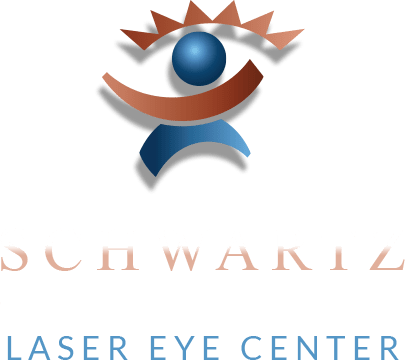Glaucoma and Aging: Why Risk Increases Over Time
Posted on October 30, 2025 by Schwartz Laser - Glaucoma
 Glaucoma is a chronic eye condition that typically develops slowly and without early warning signs. It involves gradual damage to the optic nerve, often related to increased intraocular pressure. While several risk factors contribute to glaucoma, age remains one of the most significant.
Glaucoma is a chronic eye condition that typically develops slowly and without early warning signs. It involves gradual damage to the optic nerve, often related to increased intraocular pressure. While several risk factors contribute to glaucoma, age remains one of the most significant.
Understanding the connection between aging and glaucoma is crucial for promoting early detection and effective management. At Schwartz Laser Eye Center, serving patients in Scottsdale, Glendale, and Mesa, AZ, our eye doctors’ diagnostic evaluations are designed to identify glaucoma in its earliest stages and support long-term vision preservation.
Age as a Primary Risk Factor
The risk of developing glaucoma increases notably with age. While the condition may affect younger individuals, it becomes significantly more prevalent in those over the age of 60. The structural and physiological changes that occur in the eye over time — such as reduced aqueous humor outflow, thinning of the retinal nerve fiber layer, and changes to the trabecular meshwork — contribute to a higher likelihood of pressure-related optic nerve damage.
In particular, primary open-angle glaucoma, the most common form of the disease, tends to develop slowly and becomes more likely with advancing age. Angle-closure glaucoma, while less common, also increases in frequency in older populations due to anatomical narrowing of the drainage angle.
The Role of Routine Screening
Because glaucoma often develops without noticeable visual symptoms in its early stages, age-appropriate screening is essential. Patients over 60, or those with a family history of glaucoma, are typically advised to undergo regular comprehensive eye exams that include measurements of intraocular pressure, imaging of the optic nerve, and visual field testing.
At Schwartz Laser Eye Center, our ophthalmologists and optometrists utilize high-resolution imaging modalities, such as optical coherence tomography (OCT), to assess optic nerve health and retinal thickness. These tools help identify changes before functional vision is affected, which is particularly important in older adults where the condition may be progressing silently.
Long-Term Management Considerations
Although there is no cure for glaucoma, early diagnosis allows for effective management strategies that aim to reduce intraocular pressure and preserve existing vision. With age-related changes in eye anatomy and general health, glaucoma treatment may evolve over time. The team at Schwartz Laser Eye Center provides ongoing monitoring and care tailored to each patient’s needs, taking into account their age, ocular findings, and overall health status.
Schedule a Glaucoma Evaluation
If you are over 60 years old or have concerns about glaucoma, a comprehensive eye examination may be advisable. Contact Schwartz Laser Eye Center at 480-483-3937 to schedule a consultation at one of our locations in Scottsdale, Glendale, or Mesa, AZ. Early evaluation is key to supporting long-term optic nerve health and visual function.



